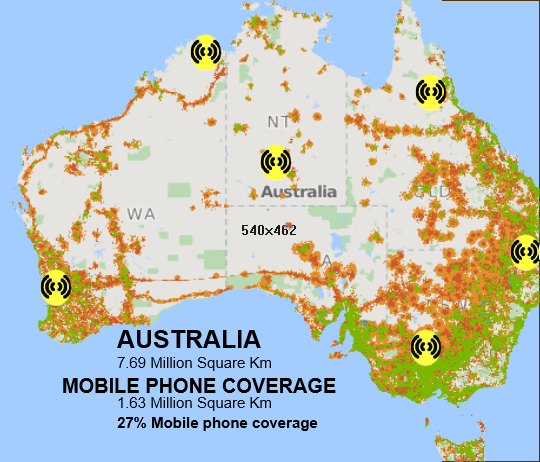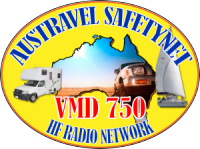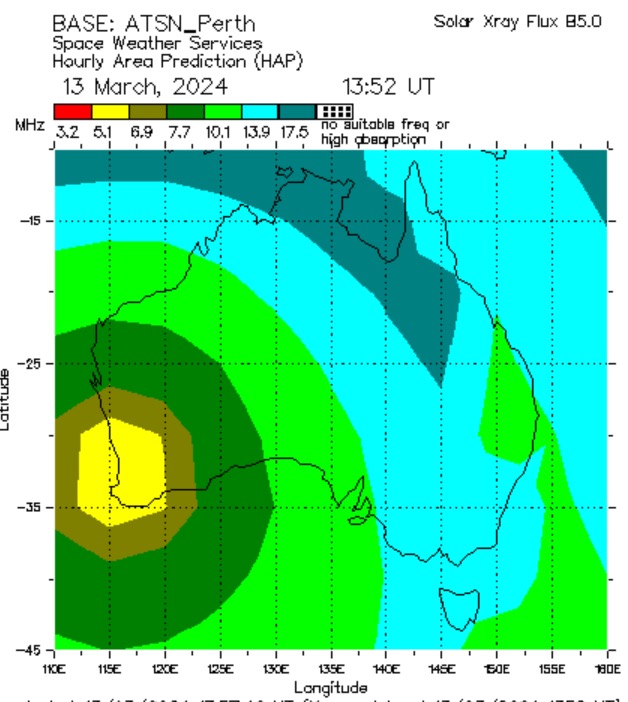Our Bases
| Base Station | Selcall | Status |
| Penong (SA) | 5199 | Operational |
| Casino (NSW) | 2199 | Operational |
| Perth (WA) | 6199 | Operational |
| Shepparton (VIC) | 3199 | Operational |
| Alice Springs (NT) | 8199 | Down |
| Kununnura (WA) | 6299 | Operational |
| Mareeba North QLD | 4199 | Operational |
Our H.E.L.P. (4357) system is available to all members - On some radios your emergency button(s) can be programmed, so that with a single press the radio automatically sends a distress alert call, gaining automatic access to a human operator. Anybody in the vehicle can send an emergency HELP call. Our HELP is not just for life threatening emergencies. Triple zero (000) on your phone is still your primary emergency call number for life threatening emergencies if you have phone service. Out of phone range HF radio can be a life saver and of course there are many circumstances that can arise in remote areas where you may just require assistance, before a situation becomes life threatening.
Our Channels and Frequencies
Channel selection at bases is to provide optimal coverage and parallel simultaneous usage of bases by members.
| Channel | Frequency | Notes |
| 1 | 3175 kHz | All Bases - Primary night and morning soon after sunrise. |
| 2 | 5127 kHz | Bases - Perth, Casino,Penong and Kununurra |
| 3 | 5270 kHz | Bases - Mareeba, Alice, Shepparton |
| 4 | 6793 kHz | Bases - Perth, Penong and Kununurra |
| 5 | 7652 kHz | Bases - Perth, Mareeba, Alice, Shepparton and Casino |
| 6 | 9323 kHz | Bases - Casino and Kununurra |
| 7 | 10203 kHz | Bases - Perth, Mareeba, Alice, Shepparton and Penong |
| 8 | 13910 kHz | Bases - Perth, Mareeba, Alice, Shepparton and Casino |
| 9 | 4862 kHz | Base - Casino analogue. (This is a priority channel for Digital Voice mobile to mobile. It is also licensed for analogue usage) |
| 10 | 17463 kHz | Bases - Perth and Shepparton - Long haul to the North |
We allow all of our channels to be used mobile to mobile including vessels, just be mindful of the sked times to minimise interference. In fact, we are the largest HF radio network in Australia that provides emergency call support, with licensing which also allows for mobile to mobile to base general radio traffic. In total Austravel has 32 licensed frequencies which cover all of Australia with all bases having Telcall+ which provides direct dial Phone access, GPS logging to mobile phone app and forwarding to nominated email addresses, SMS text to any mobile phone, messaging to Mail Box and email with perhaps the most important being 24/7 computer monitored Emergency (Help) call system.
We make the most of operational features available on newer CODAN, BARRETT and ICOM commercial radios, while still supporting older radios, making Austravel SafetyNet the premier of all HF radio networks.
Austravel now has six bases in total, two of which are North of the Tropic of Capricorn. That locates two bases covering very remote areas where it is nice to travel and mobile phone communication can be sporadic (See map below). We have a focus on having a high technical standard at the bases. Our two Northern bases have two antennas each to cater for close and long range communication while Perth base has a specific antenna to provide very strong signals to the North and North East covering the vast state of Western Australia and into the Northern Territory.
As membership grows we will add additional bases to continue to allow parallel, simultaneous operation by members for the all the Telcall+ features on our network. This means all the bases can be used at the same time. Our latest base was commissioned at Penong in South Australia October 2022. This is an example of members' funds at work expanding the netowrk.
Base and mobile frequencies.
Kiss Chest Beating Milestone achievements in HF usage by Austravel SafetyNetwork
A Testimony of Our Network
Graham Reinder's YouTube channel Great Off-Road Adventures has a great video illustrating his use of the Austravel network for his family's remote travel.
Using Our Network
You must have an "AUTHORITY TO TRANSMIT" and have a "TYPE-APPROVED" radio to use our frequencies.
Your Authority to Transmit is provided to you annually as part of your Austravel membership and is issued electronically. Our network range is restricted to calls within Australia and Australian commercial waters by ACMA licensing.
Amateur ham-radios generally aren't type-approved.
Our operating protocol
- Always use your selcall ID upon initial contact.
- Relax - we are all friendly and here to help.
- Using the network callsign is not essential as the base operators will announce that at statutory intervals.
- If your radio does not have a roger beep, please use OVER at the end of your turn. (The base operators may sometimes find it difficult to determine if you have finished without the roger beep or an OVER).
- Take your time when talking, HF conditions can make conversations difficult to follow if you speak too quickly or too far away from the microphone. Project your voice and annunciate clearly, however there is no need to shout! Hold the microphone near your mouth tilted at an angle, imagine talking across the face of the microphone in a slightly elevated, normal speaking voice. Phonetics are useful if the conditions are poor, we strongly recommend learning them but it is not essential. You may be asked to "say again" by the base operators, take your time there's no rush.
- There is a slight delay through the phone network and release time for a base to return to receive after the operater is speaking. Allow about 1 second before replying to the operator.
Note that our base operators and emergency responders are unpaid volunteers.
Telco coverage mobile phones:
The light areas on the map below show the areas of no mobile phone coverage. In recent years there has been some improvement and it has reduced now to about 63% of the Australian land mass. The yellow icons show Austravel bases, with each having a realistic range of 1500 km in every direction, providing overlaping coverage. Austravel SafetyNet HF radio covers 100% of the Australian land mass and commercial zone waters.


